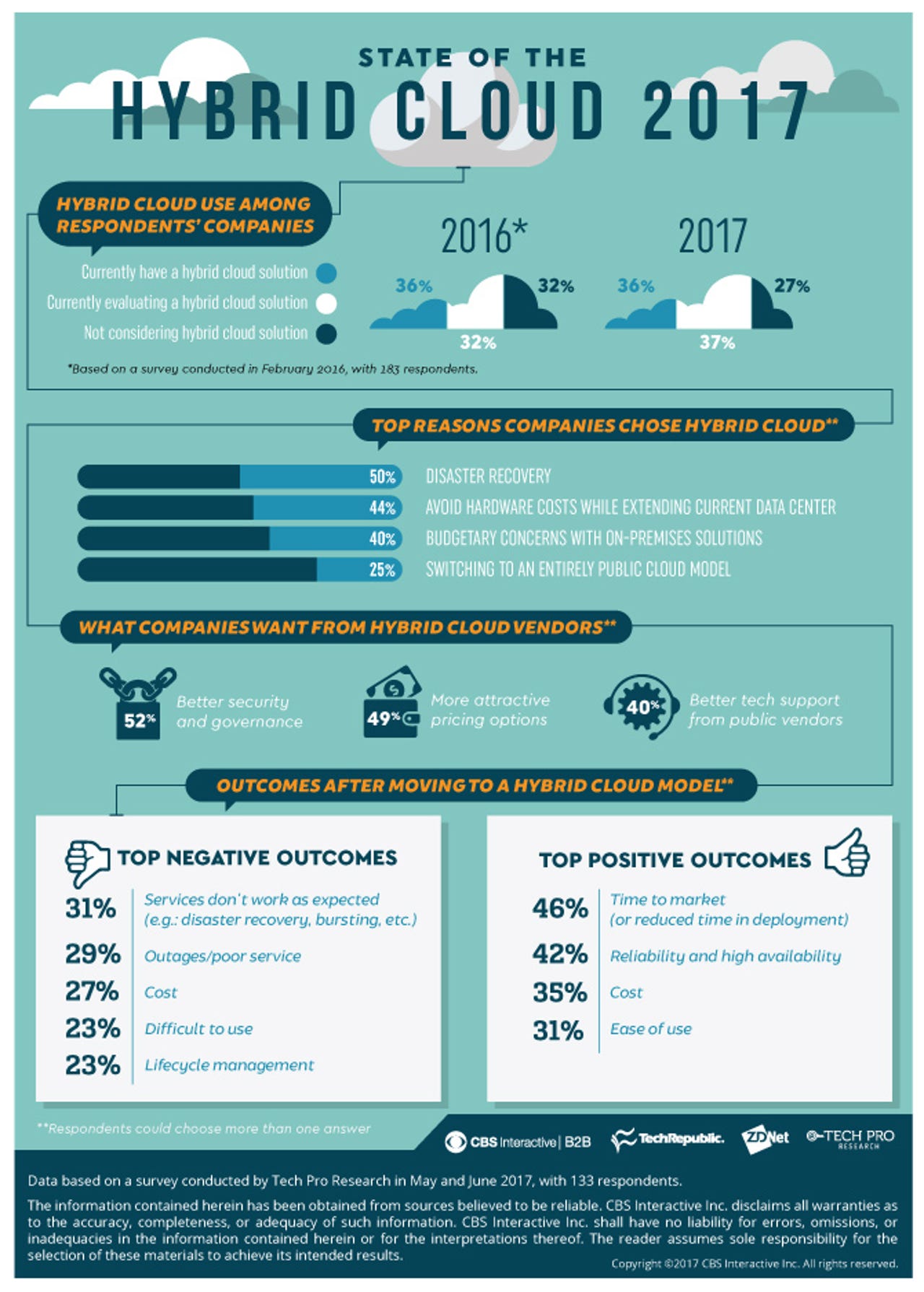Infographic: Companies are turning to hybrid cloud to save money

Ideally, a hybrid cloud deployment combines the stability and reliability of a private cloud, along with the on-demand capabilities of the public cloud. Companies are increasingly embracing hybrid cloud as a strategy on its own, or as a stop on the way to an entirely public cloud model.
When ZDNet's sister site, Tech Pro Research, surveyed IT professionals on hybrid cloud in 2016, the majority of respondents said they were familiar with the concept, and just over a third said their company had already implemented a hybrid cloud model. Respondents to a 2017 update of that survey echoed the responses from the 2016 group; however, this batch of respondents indicated that more companies currently evaluating the hybrid cloud option.
A big reason behind moving to a hybrid cloud model is cost. As TechRepublic's James Sanders pointed out in his guide to hybrid cloud, "For industries with seasonal or variable workloads, assembling a private cloud to handle normal workloads while relying on public cloud providers to handle burst workloads can be a budget-friendly IT strategy." When asked why their companies chose a hybrid cloud model, two of the top three survey responses chosen pertained to budgeting.
This infographic contains some key results from the 2017 hybrid cloud survey. For more results, about topics like cloud vendor selection, the future of cloud systems, and challenges of moving to a hybrid cloud model, plus how those compare to previous survey results, check out the full report: Hybrid cloud 2017: Deployment, drivers, strategies, and value(Tech Pro Research membership required).
